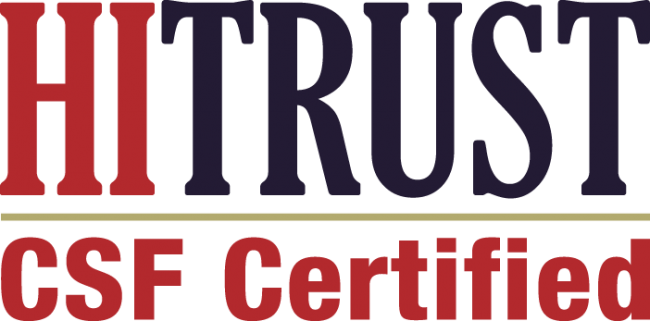The Medicare Annual Wellness Visit (AWV) program, introduced in 2011 under the Affordable Care Act, offers a pivotal opportunity to enhance patient engagement and compliance among Medicare beneficiaries. By focusing on preventive care and personalized health planning, AWVs aim to improve health outcomes and reduce healthcare costs.
Source: NP Journal
Understanding the Medicare Annual Wellness Visit
The AWV is a yearly appointment available to Medicare Part B enrollees who have had coverage for more than 12 months. Unlike a traditional physical exam, the AWV emphasizes preventive care and includes:
- A comprehensive health risk assessment
- Review of medical and family history
- Measurement of vital signs
- Cognitive impairment screening
- Personalized health advice and planning
This visit is covered by Medicare at no cost to the patient, provided the healthcare provider accepts Medicare assignment.
Source: Investopedia
Medicare AWV for Chronic Disease Management
Medicare Annual Wellness Visits (AWVs) play a critical role in chronic disease management by proactively identifying risks, fostering patient-provider communication, and enabling personalized care plans. Here’s how AWVs specifically improve chronic disease management:
🔍 1. Early Detection of Chronic Conditions
AWVs include comprehensive health risk assessments and screenings that can identify early signs of chronic diseases such as hypertension, diabetes, and cognitive decline. Early detection enables:
- Timely interventions
- Slower disease progression
- Avoidance of costly emergency care
📊 Stat: According to the CDC, 90% of the nation’s $4.1 trillion in annual healthcare expenditures are for people with chronic and mental health conditions. AWVs help address this cost burden early on.
🧭 2. Personalized Prevention Plan
Each AWV results in a Personalized Prevention Plan tailored to the individual’s risk profile, which includes:
- Recommended screenings and immunizations
- Lifestyle modification goals (diet, exercise, smoking cessation)
- Chronic condition monitoring recommendations
This structured planning boosts adherence and guides patients toward long-term health improvements.
👥 3. Strengthened Patient-Provider Relationship
AWVs offer dedicated, non-urgent time for discussions between patients and providers. This builds trust and allows for:
- Better understanding of the patient’s goals
- Shared decision-making in chronic condition management
- Greater likelihood of treatment adherence
🗣️ Patients who feel heard and involved are more likely to comply with their care plans.
📅 4. Regular Monitoring & Care Coordination
Annual visits set a foundation for ongoing monitoring and follow-ups, especially for those with multiple chronic conditions. Through AWVs:
- Providers can coordinate care across specialties
- Gaps in medication adherence or referrals are identified
- Remote patient monitoring or Chronic Care Management (CCM) can be triggered
📈 5. Increased Participation in Care Management Programs
AWVs often serve as a gateway for enrolling patients in other CMS care management programs, such as:
- Chronic Care Management (CCM) for patients with 2+ chronic conditions
- Remote Therapeutic Monitoring (RTM) for ongoing treatment adherence
- Behavioral Health Integration (BHI) for comorbid mental health needs
These programs further enhance outcomes by providing continuous support.
✅ 6. Improved Compliance and Outcomes
Studies have shown that patients who receive AWVs are more likely to:
- Complete recommended screenings
- Follow chronic disease management plans
- Stay out of the emergency room
📊 A study published in JAMA (2019) found that AWV recipients had a 5.7% higher rate of preventive service use and a 9% lower hospitalization rate over 2 years.
Enhancing Patient Engagement Through AWVs
AWVs serve as a structured platform for healthcare providers to engage patients in their health management actively. By developing personalized prevention plans, patients become more involved in their healthcare decisions, leading to increased adherence to medical advice and treatment plans.
Source: Oxford Academic
Moreover, AWVs facilitate the identification of health risks and early intervention, which is crucial in managing chronic conditions and preventing disease progression.
Source: NP Journal
Strategies to Improve AWV Participation
To enhance patient engagement and compliance through AWVs, healthcare providers can implement the following strategies:
1. Education and Outreach
Inform patients about the availability and benefits of AWVs through various channels, including in-office materials, community events, and digital platforms.
2. Streamlined Scheduling
Incorporate AWV scheduling into routine appointment workflows and offer flexible scheduling options to accommodate patients’ needs.
3. Team-Based Approach
Utilize a multidisciplinary team, including nurse practitioners and physician assistants, to conduct AWVs, thereby increasing capacity and accessibility.
Source: Aging Research Alliance+1CMS+1
4. Use of Technology
Implement electronic health record (EHR) prompts and patient portals to identify eligible patients and facilitate appointment reminders.
5. Cultural Competency
Develop culturally tailored outreach programs to address barriers and encourage participation among diverse populations.
Conclusion
The Medicare Annual Wellness Visit program holds significant potential to improve chronic disease management and patient engagement through preventive care and personalized health planning. By adopting targeted strategies to increase participation, healthcare providers can enhance health outcomes and contribute to the overall efficiency of the healthcare system.








